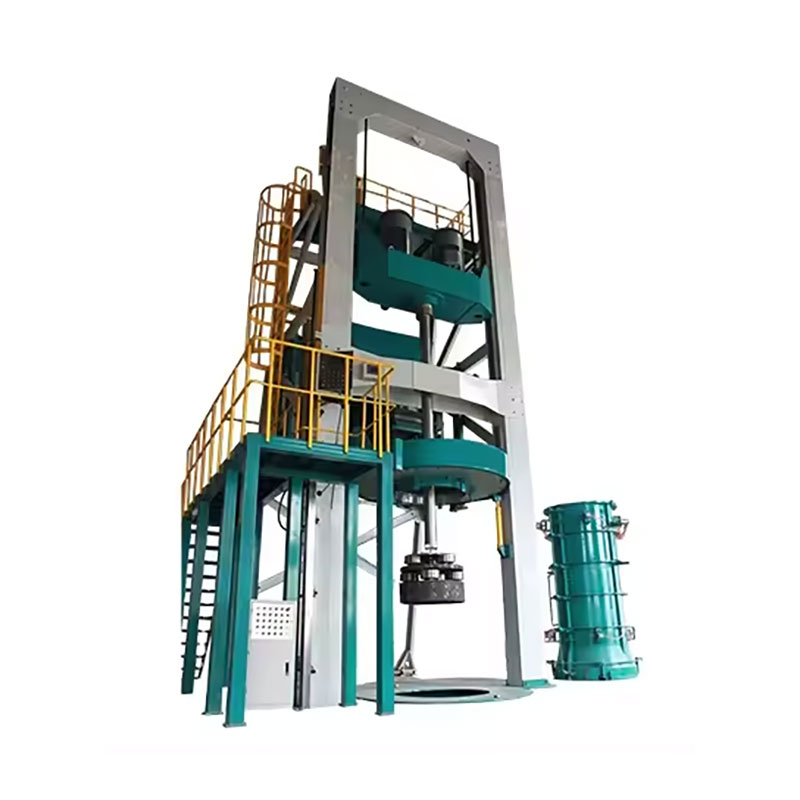What Are the Advantages of Vertical Extrusion Concrete Pipe Making Machine Compared with Other Cement Pipe Machines?
2025-05-07
Vertical Extrusion Concrete Pipe Making Machine is a kind of equipment designed for the production of concrete pipes. Its unique working principle and structural characteristics enable it to efficiently produce pipes that meet the requirements. This pipe making machine is widely used in the concrete products industry.
In the production process, the control requirements for raw materials are very strict. In particular, the consistency of the concrete mixture directly affects the quality of radial extrusion pipe making. If the concrete mixture is too dry and the moisture content is insufficient, it will be difficult to form a continuous whole during the production process.

In the process of making pipes with Vertical Extrusion Concrete Pipe Making Machine, the amount, size and welding quality of the steel skeleton must be strictly controlled. The length of the longitudinal reinforcement must be uniform, and the end face must be flush without tilting or twisting.
In the production of large-diameter suspension roller pipes, the problems of inner wall collapse and separation of the outer wall from the inner wall of the mold are often encountered, especially in winter production. When the inner diameter of the pipe exceeds Φ1200mm, the inner wall of the pipe is reduced in arc and self-arching force, and the wall thickness increases, resulting in an increase in the gravity of the upper concrete. If the cohesion of the concrete on the top of the pipe is not enough to support the gravity and self-arching effect, the material will collapse and the outer wall will separate from the inner wall of the mold. In addition, the steam entering the mold wall during steam curing will also cause shadows, which is the objective reason for the internal collapse and external sinking problems that are prone to occur in large-diameter suspension roller pipes.
For the problem of insufficient socket strength, in the suspension roller process, the forming of the socket mainly depends on the axial movement of the concrete during the rolling process. Since the socket is not on the rolling surface of the roller, it is difficult to obtain strong rolling.
The core mold vibration pipe making machine, including the core lifting pipe making machine, is another common pipe production equipment. This equipment uses the vibration of the core mold to evenly distribute the concrete on the inner wall of the mold, thereby avoiding the problems of inner wall collapse and outer wall separation in the production of large-diameter suspension roller pipes. However, this equipment has high requirements on the quality and mix ratio of concrete, as well as high requirements on the proficiency of operating technology.
The centrifugal pipe making machine is used for pipe production. The spigot part is subjected to centrifugal force during forming, so that it is fully constrained by the mold. Therefore, compared with the core mold vibration process, the pipe produced by the centrifugal pipe making machine has been significantly improved in the problem of spigot deformation. Since the water-cement ratio of plastic concrete is relatively large, the centrifugal process is prone to reduce the impermeability, which significantly reduces the impermeability of the pipe.
Although the core mold vibration pipe making machine is flexible and can produce pipes of various specifications in the same pit, each replacement or adjustment of the mold, including the disassembly and assembly of the outer mold, inner mold and rolling plate, usually takes 3 to 4 hours. This time consumption will undoubtedly increase significantly when the mold is frequently adjusted instead of mass production of a single specification of pipe.
Comparing the products produced by the four processes, we found that: although the centrifugal process has the most beautiful appearance, the pipe body strength and impermeability are not good, and the production efficiency is low and the cost is high; the suspension roller process has moderate efficiency and considerable cost in the production of small-diameter pipes, but it is easy to collapse and sink when forming large-diameter pipes, and the socket strength is also insufficient; the core mold vibration process is less efficient for small-diameter pipes, and it is difficult to meet the requirements for pressure resistance and impermeability, especially in DN300-DN500 specifications; and the Vertical Extrusion Concrete Pipe Making Machine has excellent performance in product quality, production efficiency and cost, although it has fewer production specifications and time-consuming specification changes.
After actual production comparison, we found that the Vertical Extrusion Concrete Pipe Making Machine is superior to the other three processes in production cost, production efficiency and product quality. Although its equipment has a large one-time investment, if the customer requires many product models and short delivery time, it can be solved by equipping enough mold models and bottom trays. In summary, the vertical radial extrusion process has significant advantages in the production of cement pipes. With the increase of urban drainage pressure and the increasing demand for high-quality, high-standard and high-efficiency cement pipes in projects, the vertical radial extrusion process will undoubtedly have a broader market prospect with its high production efficiency and high-quality product quality.
























